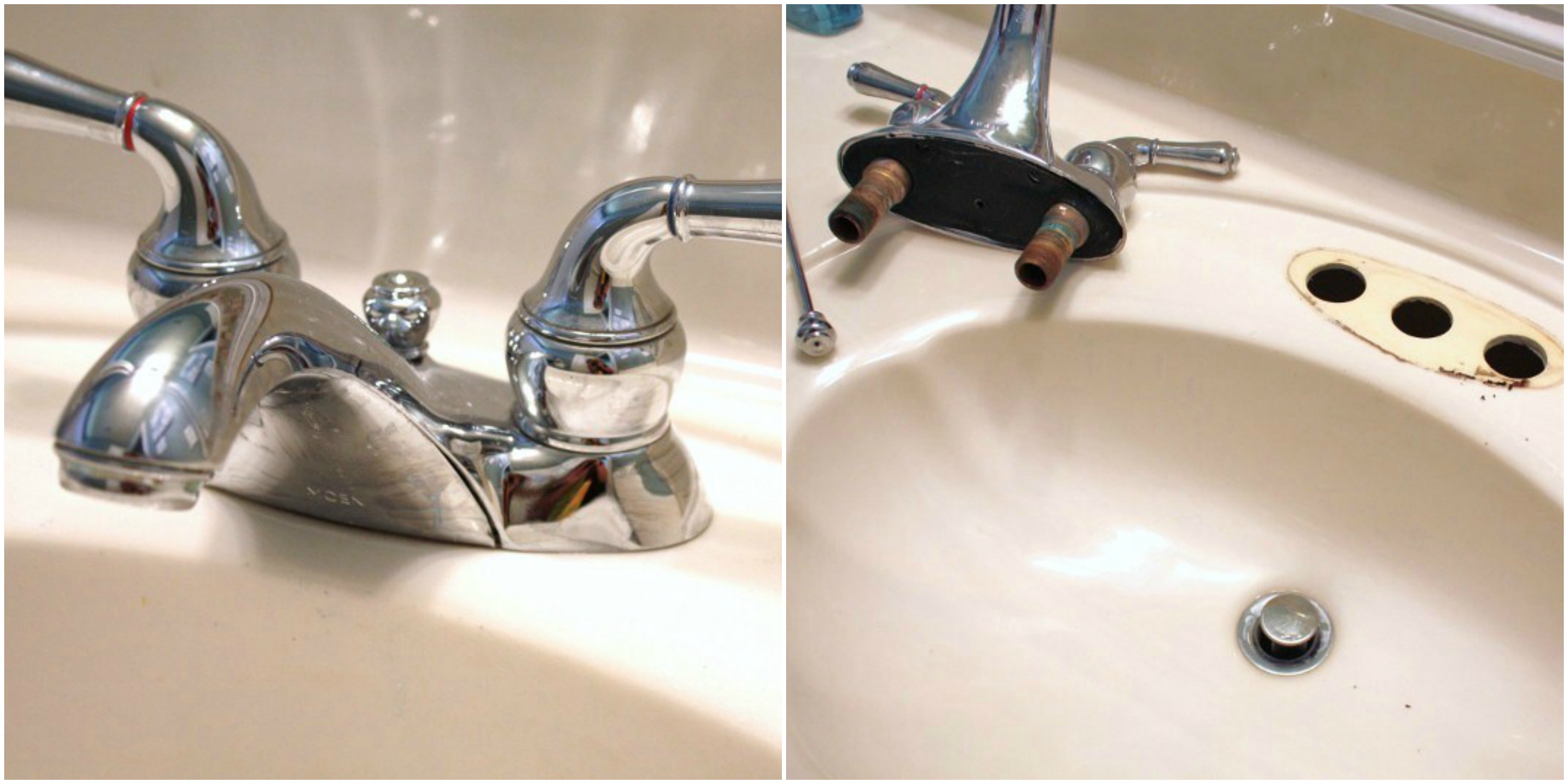Understanding the Anatomy of a Bathroom Sink Faucet
/faucet-resized-56a4e8435f9b58b7d0d9d64f.jpg)
How to clean bathroom sink faucet – To effectively clean a bathroom sink faucet, it’s crucial to understand its anatomy. The faucet consists of several key components that work together to deliver water and control its flow.
To keep your bathroom sink faucet sparkling, regular cleaning is essential. With a few simple steps, you can restore its shine. However, if you’re considering a bathroom upgrade, a 50 inch double sink bathroom vanity could transform your space. Its ample counter space and dual sinks provide both convenience and style.
Returning to the faucet, a mixture of vinegar and baking soda can effectively remove mineral deposits and stains.
Faucet Parts
- Handle: The handle is the part of the faucet that you use to turn the water on and off and adjust its temperature.
- Spout: The spout is the part of the faucet that dispenses the water. It can be fixed or swiveling.
- Aerator: The aerator is a small device located at the tip of the spout that mixes air with water to create a more forceful stream.
- Base: The base is the part of the faucet that mounts to the sink and houses the internal components.
Methods for Cleaning a Bathroom Sink Faucet

Cleaning a bathroom sink faucet is an important part of maintaining a clean and healthy bathroom. There are several different methods that can be used to clean a faucet, each with its own advantages and disadvantages.
Using Vinegar
Vinegar is a natural cleaning agent that can be used to remove mineral deposits and soap scum from faucets. To clean a faucet with vinegar, follow these steps:
1. Fill a bowl or cup with white vinegar.
2. Dip a cloth or sponge into the vinegar and wipe down the faucet.
3. Allow the vinegar to sit on the faucet for 5-10 minutes.
4. Rinse the faucet with clean water.
5. Dry the faucet with a clean cloth.
Using Baking Soda
Baking soda is another natural cleaning agent that can be used to clean faucets. To clean a faucet with baking soda, follow these steps:
1. Make a paste of baking soda and water.
2. Apply the paste to the faucet and allow it to sit for 5-10 minutes.
3. Scrub the faucet with a sponge or brush.
4. Rinse the faucet with clean water.
5. Dry the faucet with a clean cloth.
Using Commercial Cleaning Solutions, How to clean bathroom sink faucet
There are a number of commercial cleaning solutions that can be used to clean faucets. These solutions are typically more effective than natural cleaning agents, but they can also be more expensive. To clean a faucet with a commercial cleaning solution, follow the instructions on the product label.
Comparison of Cleaning Methods
The following table compares the effectiveness, ease of use, and cost of the different cleaning methods discussed in this section.
| Cleaning Method | Effectiveness | Ease of Use | Cost |
|—|—|—|—|
| Vinegar | Good | Easy | Inexpensive |
| Baking Soda | Good | Easy | Inexpensive |
| Commercial Cleaning Solutions | Excellent | Easy | Expensive |
Tips for Maintaining a Clean Bathroom Sink Faucet: How To Clean Bathroom Sink Faucet
:max_bytes(150000):strip_icc()/how-to-clean-a-sink-faucet-1900294-02-40f1a01ad9bc4c44b829e64567ae3340.jpg)
Maintaining a clean bathroom sink faucet not only enhances its aesthetic appeal but also prevents mineral buildup and water stains. Regular cleaning and maintenance are essential to ensure its longevity and functionality. Here are some practical tips to keep your bathroom sink faucet sparkling clean:
Regular Cleaning and Maintenance
Regular cleaning is crucial for removing dirt, soap scum, and mineral deposits. Use a mild cleaning solution and a soft cloth to wipe down the faucet’s exterior. For stubborn stains, apply a vinegar solution and let it sit for a few minutes before rinsing. For the interior, use a toothbrush or pipe cleaner to remove any debris from the aerator and filter.
Preventing Mineral Buildup
Hard water can lead to mineral buildup on the faucet, resulting in unsightly stains and reduced water flow. To prevent this, install a water softener or use a descaling solution to remove existing deposits. Regularly wiping down the faucet with a dry cloth after use can also help prevent mineral buildup.
Importance of Regular Maintenance
Regular maintenance helps ensure the faucet’s optimal performance and extends its lifespan. Check for any loose connections or leaks and tighten them if necessary. Replace the aerator and filter as recommended by the manufacturer. Lubricate moving parts periodically to prevent squeaking or stiffness.
Maintenance Checklist
- Clean the faucet’s exterior with a mild cleaning solution – Weekly
- Remove mineral deposits with a vinegar solution – Monthly
- Clean the aerator and filter – Every 3-6 months
- Check for loose connections or leaks – Quarterly
- Lubricate moving parts – Annually
Cleaning bathroom sink faucets is an essential task to maintain hygiene and aesthetic appeal. For antique bathroom vanities with sinks, it’s crucial to handle the cleaning process delicately. Antique bathroom vanities with sinks often have intricate designs and delicate finishes that require special care.
Therefore, using gentle cleaning solutions and soft cloths is highly recommended to avoid any damage to the antique finish.